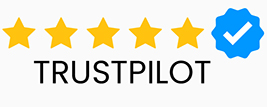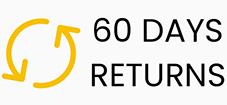




















OK – Let’s go!
A golf laser rangefinder is a precision measuring device that uses laser technology to calculate the exact distance from where you’re standing to a specific target on the course — such as the flagstick, bunker, or hazard.
When you aim the device and press the button, it sends out a laser beam. The beam reflects off the target back to the sensor, which then calculates the time taken for the reflection to return. The laser rangefinder instantly converts that data into a distance measurement, usually displayed in yards or metres.
Laser rangefinders are extremely accurate — typically within ±1 yard (or metre) of the true distance.
Most devices have a range capability of 400–1000 yards, though golfers rarely need more than 350–400 yards in practice.
Even with these minor variables, a quality laser rangefinder remains far more accurate than GPS apps or course markers.
Absolutely — and in fact, beginners can benefit more than most from using a laser rangefinder.
Here’s why:
✅ 1. Learn Real Club Distances
Early in your golfing journey, one of the hardest skills to develop is knowing how far you actually hit each club. A rangefinder gives you precise feedback — you’ll quickly learn that your 7-iron goes 135 yards, not 150.
✅ 2. Build Distance Awareness
Beginners often overestimate their shot distances. Using a rangefinder during practice and play helps build a realistic understanding of your capabilities.
✅ 3. Eliminate Guesswork
Beginners typically rely on course markers or rough estimates, which can be off by 10–15 yards. A laser rangefinder gives exact numbers, allowing even new players to make smarter choices.
✅ 4. Encourages Better Strategy
Instead of automatically reaching for a driver, a beginner with accurate yardage can plan lay-up shots and approach distances more effectively — learning good habits early.
✅ 5. Easy to Use
Modern laser rangefinders are designed with auto-focus, vibration feedback, and one-button operation, so they’re incredibly intuitive even for first-time users.
Yes — but only non-slope models are legal under R&A and USGA rules.
Slope rangefinders that adjust for elevation can only be used in practice rounds unless the slope feature is turned off.
Always check your event’s local rules before play.
| Feature | Description |
| Technology | Uses laser beam reflection for instant distance readings |
| Accuracy | Typically within ±1 yard |
| Range | 400–1000 yards |
| Legal Use | Non-slope models allowed in competition |
| Ease of Use | Point, aim, press button |
| Best For | Beginners to advanced golfers who want precision |
A golf laser rangefinder is one of the most useful tools any golfer — especially a beginner — can own. It’s not just about knowing how far away the flag is; it’s about making better, data-driven decisions.
The precision of a rangefinder helps you learn your true distances, choose clubs more confidently, and eliminate unnecessary risks. While it won’t fix your swing, it will help you play smarter golf — which often leads to lower scores faster.
For anyone starting out, a laser rangefinder is an investment in accuracy, learning, and long-term improvement.
Alex Smith is the Head PGA Pro at Online Golf Shop. With over 20 years of experience in the golf industry, Alex has a passion for helping golfers improve their game. He shares trusted and authentic advice through tips, tricks, and thorough product reviews—always based on his own experiences and insights. Alex also helps shape our product selection, making sure it’s tailored to every golfer’s needs, helping you find the right equipment and strategies to play your best golf!
Frequently Asked Questions?
It measures the exact distance to your target — such as the flag or hazard — using a laser beam, helping golfers make precise club selections.
Most laser rangefinders are accurate within ±1 yard, with premium models offering sub-yard precision in ideal conditions.
Yes, beginners can use them easily. Rangefinders help new golfers learn club distances, improve confidence, and make smarter shot choices.
Laser rangefinders measure direct line-of-sight distance using a beam, while GPS rangefinders use satellite mapping to show distances to greens and hazards.
Yes, but only non-slope versions are allowed in official competitions. Slope models can be used for practice or casual play.
Most can measure up to 400–1000 yards, which easily covers any hole on a standard golf course.


Phone: 020 8064 0105